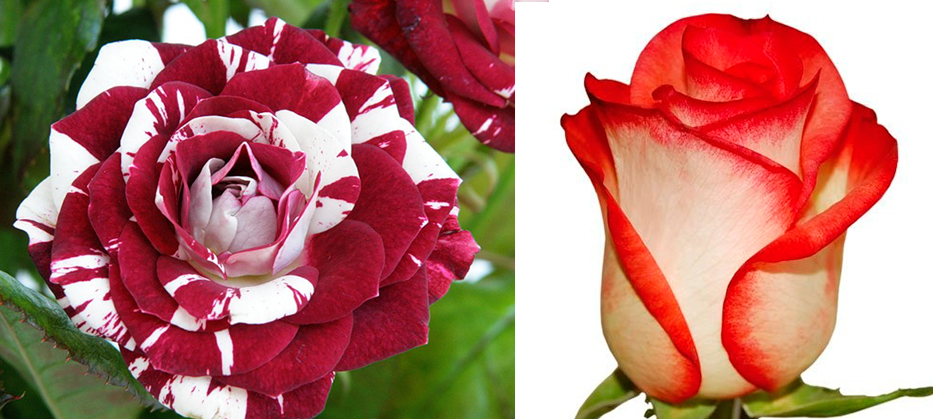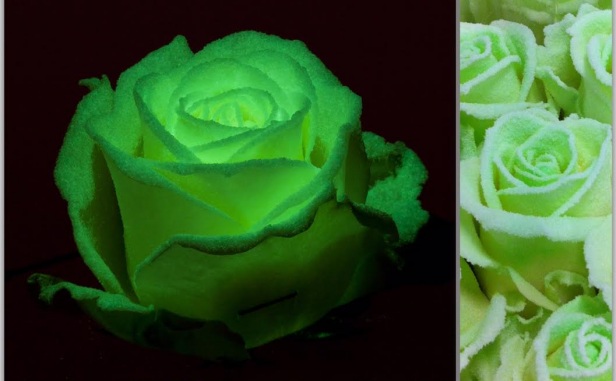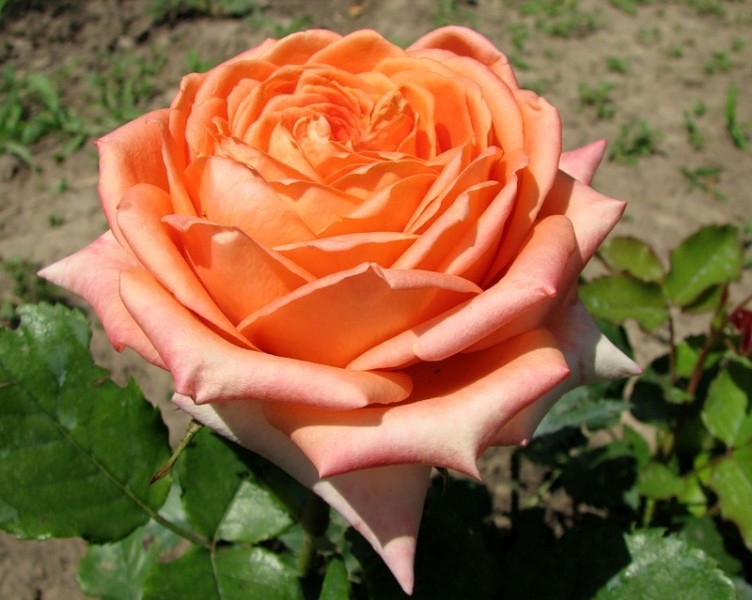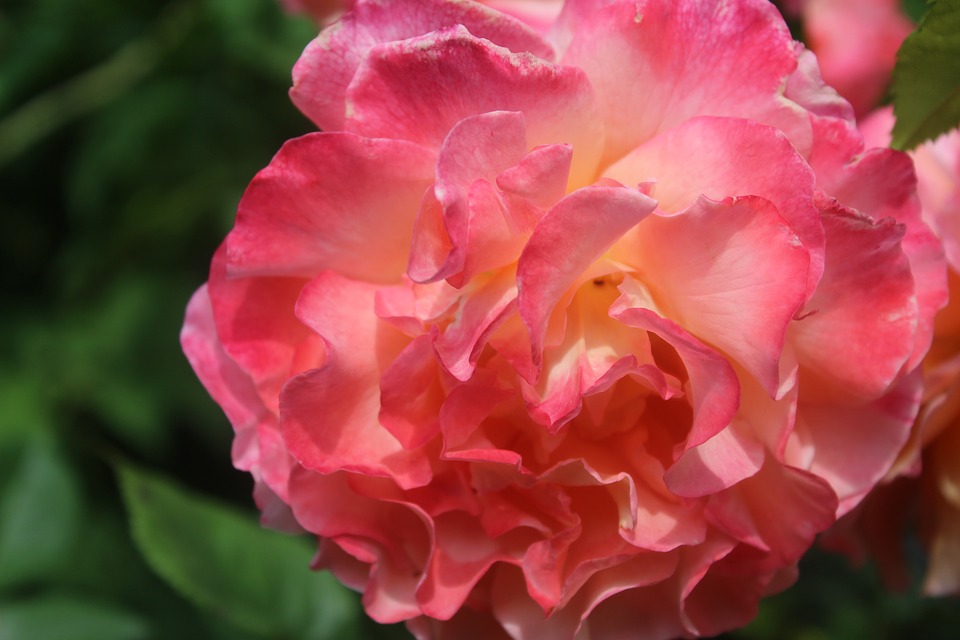Content:
Bicolor roses have recently been considered a rarity. However, time passes, and domestic breeders are constantly developing new varieties of their favorite flowers. Now they can be increasingly found in summer cottages.
A quick reference about culture
The described two-color plant belongs to the genus Rosehips and the Pink family, as well as the monochromatic one. However, the two colors of roses were bred by artificial selection.
The concept of "two-color roses" is traditionally understood as hybrid varieties, which simultaneously possess several characteristics of different independent varieties. In this regard, their color is not monochromatic, but consists of two colors, contrasting or similar shades.
They are grown for decorative purposes. Flowers of hybrid two-tone varieties are often used in landscape design and in professional floristry (creating festive bouquets and flower arrangements). Decorative species are of great importance in the improvement of gardens, parks, squares. The petals contain a high concentration of bioflavonoids and natural antioxidants, therefore they are used in the cosmetic industry for the manufacture of anti-aging products. In Bulgaria, the petals of the culture are often used to make homemade jams.
In Russia, these unusual varieties began to appear quite recently, at the end of the 20th century, and came from Western Europe. But in recent years, domestic specialists have also begun to engage in selection. Many European varieties have been zoned for Russian climatic conditions.
In professional floristry, the following varieties of spotted and striped roses are most often used:
- two-tone yellow-red roses;
- black and red roses;
- black and blue roses;
- pink-green roses (green is closer to light green);
- yellow-green roses (pale greenish);
- orange-red roses (orange is the main color);
- the rose is yellow with red edges (or crimson);
- white and green roses;
- white and blue roses with wavy border.
The Ecuador variety is also very popular. When creating bouquets, they are often combined with monochromatic varieties. They are also actively used in creating custom wedding bouquets.
In landscape design, the following types are most often used:
- green yellow rose (Western florists call such hybrids yellow-green);
- reddish-white roses, with a cream or pinkish tint (red and white);
- variegated (the so-called variegated);
- a snow-white rose with a delicate pink edge;
- a yellow rose with a pink edge (with delicate color transitions, reminiscent of a watercolor drawing on paper);
- yellow roses with a red border;
- rose obrigado;
- pink-lilac rose (striped).
In combination with phlox and peonies, white-lilac varieties look good.
Color characteristics
You can recognize plants by the following parameters:
- the height of an adult bush is 180 - 200 cm;
- leaf color - dark green;
- leaf shape - elongated, pointed;
- color of flowers - one color is pronounced, the second is slightly weaker;
- aroma - persistent floral or honey smell.
Some hybrid varieties are good honey plants, attracting bees with an unusual bright color and pleasant aroma. For example, this is the variety called Iz Dusty.
Any such variety will certainly attract the attention of guests with its bright and unusual color, will delight the eye of any flower lover.
Care features
Requirements for soil, light and moisture
Hybrid species are quite demanding on the composition of the soil. They do not like lime and a large amount of loam, and also grow poorly where groundwater is close to the surface. Before planting, add manure, compost, peat, or store-bought nutrient mix to the soil.
Landing
You need to plant plants as follows:
- First you need to check if the soil is suitable for planting. For this, a lump of earth is squeezed in the hand and thrown. If it breaks, the ground is good for planting.
- Further, the root system of the rose bush is maximally exposed.
- The plant is placed in a pre-dug hole with a nutrient mixture.
- The roots are gently straightened.
After that, the pit is thrown with earth. You can water the soil around the seedling a little and gently loosen it to absorb moisture. Bushes of white and pink varieties take root best.
Basic care activities
In the spring, plants definitely need feeding, for this you can use dry industrial fertilizers. The powder is scattered under rose bushes and mixed with the pova using a hoe for better absorption.
To control weeds, loosening and mulching are actively used. Mulching is used in cases where the weed has very deep roots (loach, wheatgrass, sow thistle). In this case, it is not recommended to dig up weeds by the root, as the roots of the cultivated plant may be damaged. The mulch layer suppresses the growth of weeds.
Withered leaves and flowers must be removed in a timely manner. Otherwise, they can rot and the flower will become seriously ill. This happens especially often in rainy summer.
Below are the Top 10 most unpretentious varieties to care for, suitable for growing in the Middle Lane:
- deep crimson with white inserts Fantasy (Fantasia);
- white and green Green Ice;
- white with pink border Ambiance;
- red with white stripes Red Intuition;
- striped variety Abracadabra;
- the red and white variety Henri Matisse;
- yellow-pink grade Marvell;
- white with pink edge Crazy Wang;
- red with wavy edges From Dasted;
- variegated varieties - all species names, zoned for the Moscow region.
These varieties have good resistance to cold weather, but require shelter for the winter.
Formation of culture
The formation of a culture takes place through pruning. During pruning, the following rules must be observed:
- after pruning, the bush should be half the size;
- dried branches are cut to the very base so that the cut bush looks beautiful and neat;
- a thin growth must be left, then the flowering will be more intense;
- all cut off shoots, flowers and leaves are burned, as they can be affected by diseases and pests;
- pruning is done in the spring to prepare the plant for flowering.
In some flowers with a certain color, the lack of regular pruning leads to deformation of the bush and shoots. The list is presented below:
- red-orange roses;
- variegated rose;
- rose red-yellow;
- tiger rose Fantasy;
- roses are crimson pink;
- striped roses;
- variegated rose Fantasy;
- rose of Obrigado.
These varieties should be pruned, if possible, not only in spring but also in autumn.
Reproduction
Among the two-colored species, miniature varieties are often found. They are most conveniently propagated by cuttings. Before planting, they are soaked in a growth stimulator, after planting, they are kept under a film for some time, for better adaptation to changed conditions. Cuttings develop into full-fledged pink seedlings after about 2 years.
Tall varieties are usually propagated by layering and dividing the bush. To do this, it is necessary to dig the roots, and then make a neat dig with a sharply sharpened shovel and with a quick dexterous movement remove the bush from the ground without deforming the root system. At least 3 shoots must be left on each part of the root. Then the root is cut into pieces.
Major diseases and pests
Among the main diseases and pests, the following can be noted:
- powdery mildew;
- black spot;
- leaf aphid;
- spider mite.
It should be noted that artificially bred species are rarely affected by diseases and pests. However, such cases are still noted, especially in humid climates.
To combat diseases and pests, spray the bushes with copper or iron sulfate is used. Industrial insecticides are used to control pests.
Plants with the following color have the most resistant immunity to diseases and pests:
- black and blue roses;
- black and red roses;
- yellow roses with a red border;
- yellow-orange roses;
- spotted roses;
- variegated roses;
- snow-white with a green tint;
- yellow-pink roses;
- white rose with a red border;
- red and white speckled flowers.
They tolerate high humidity well, therefore they are almost not affected by the fungus.
Hybrid varieties can be a real pride of a florist. The main thing is to choose colors so that they blend harmoniously with the surrounding landscape.



















